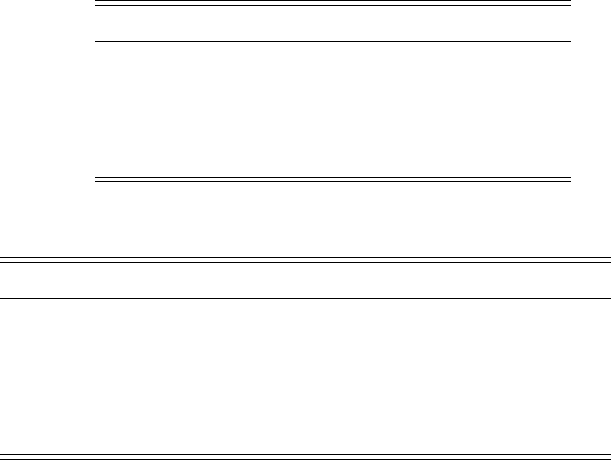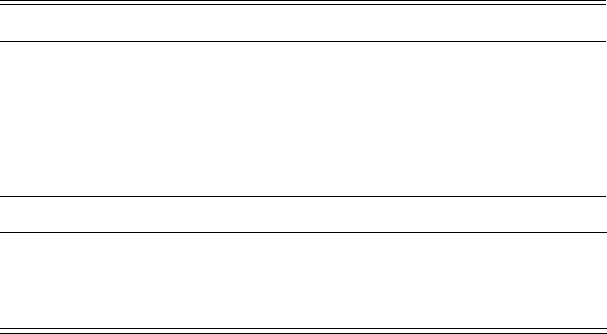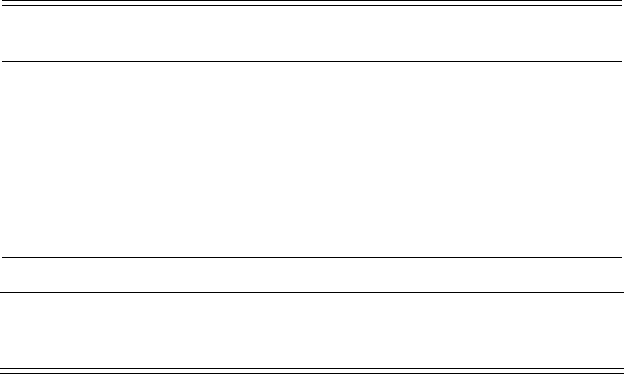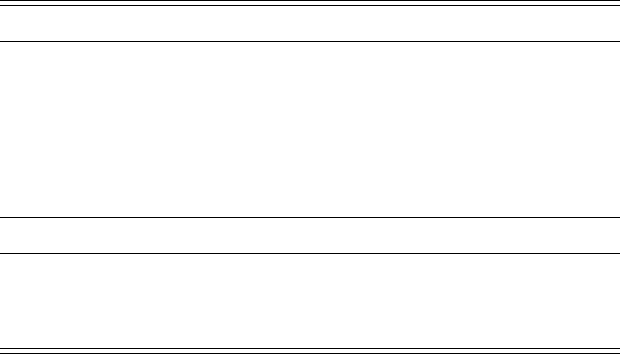Adelaar Willem, Muysken Pieter. The languages of the Andes
Подождите немного. Документ загружается.

554 6 The languages of Tierra del Fuego
extinct Chono or Guaiteca Indians, who lived in the province of Ais´en, north of the
Alacaluf.
Aguilera (1978) and Clairis (1987) are the most recent descriptions of the language,
and particularly Aguilera’s work (e.g. 1988, 1997, 1999) provides reliable data. Viegas
Barros (1990) has done a comparative analysis of all available sources and given a
dialectological survey of the language, concluding that there are three recognisably
distinct varieties: northern, central and southern Kawesqar.
The Yahgan (also Yagan) or Yamana occupied the southern coast of Tierra del Fuego
and the archipelago surrounding it, extending to Cape Horn. While there were still
between 2,500 and 3,000 Yahgan in 1875 (Cooper 1946c), Clairis (1985) mentions
six to eight elderly speakers of Yahgan living on Navarino island. There were two in
1994. The principal traditional sources on Yahgan are Thomas Bridges, who produced
a large dictionary in 1879 (1933) and wrote a set of notes (1894), Adam (1884–5), and
Gusinde (1937). Golbert de Goodbar (1977, 1978) presents glossed sentences with brief
grammatical descriptions.
In contrast with these three groups, that all represent canoe nomads, the Selk
nam or
Ona were a land people. The Selk
nam were also much taller than the Chono, Kawesqar
and Yahgan, averaging six feet or 1.80 cm. Their traditional habitat was the northern
and central part of the island of Tierra del Fuego proper (Cooper 1946d). There was
only one (older) person who could still speak the language in the 1980s, according to
Clairis (1985), while Najlis (1973, 1975) mentions several speakers. The Selk
nam were
a hunting nation, living mainly on guanaco meat.
Of the Haush or Manekenkn the last speakers died around 1920; they lived on the east-
ern point of the island of Tierra del Fuego, and shared their lifestyle with the Selk
nam.
Guyot (1968: 12) suggests that they were earlier settlers than the Selk
nam, and were
subsequently pushed to the southeast. It is even possible that the Haush in turn had taken
over the island from the Yahgan.
In Patagonia, on the continent proper, the people have been designated traditionally as
Patagones or Tehuelche. Clairis (1985), following Casamiquela, divides the Patagones
into four groups. The northernmost group died out early in the nineteenth century, and
nothing is known about their language. The group slightly to the south is known as
G¨un¨una K¨une, and also as Gennaken and Pampa. The last speaker of their language,
referred to as G¨un ¨unaYajich [g
n
nayax
ˇc], died in 1960, and Casamiquela (1983)
provides a very useful sketch of it.
The group known as Tehues or Teushen, yet further to the south, also died out in
recent history. Some early twentieth-century materials have been published by Lehmann-
Nitsche (1913). The one group still surviving is called Aonek’enk or Tehuelche (as
mentioned above, also the name for all the indigenous groups of continental Patagonia).
According to Clairis (1985) about thirty members of the group are alive (more recent

6.2 Ethnohistory 555
Table 6.2 Historical demographic data for the canoe nomads
(summarised)
Chono Kawesqar Yahgan
until 1850 21 fam. 4,000 2,900
1875 1 fam 2,500+
1900 130–945
1925 150–400 50
1950 100 40
1985 – 28 6–8
Table 6.3 Historical demographic data for the hunter nomads (summarised)
Selk
nam Haush G¨un¨una K¨une Tehues Tehuelche
until 1850 3,600 300 some 500–600 9,000–10,000
1875 2,000 2,000–6,000
1900 <1,500 <300
1925 70–100 1–3 10–12
1950 20 40
1975 2–3 100
1985 1 – – – 29
estimates give 200), of whom three to four are reasonably fluent speakers. Fern´andez
Garay has provided a detailed description of this language (1993a, b, 1995, 1998c).
G¨un¨una Yajich is the sole documented member of the northern branch of the Chonan
family. The proportion of common vocabulary between G¨un¨una Yajich and Tehuelche
does not exceed 11 per cent (Clairis 1985).
6.2 Ethnohistory
The contact with Europeans was disastrous for the indigenous peoples of Tierra del
Fuego. Tables 6.2 and 6.3 give an overview of the available population data, culled from
Cooper (1917, 1946a, b, c, d), Bird (1946), Guyot (1968), Najlis (1973) and Clairis
(1985).
While these tables give a false sense of precision, based as they are on many differ-
ent sources of various types, the overall pattern presented is clear. Particularly in the
final part of the nineteenth century, the indigenous populations declined rapidly. In the
case of the canoe nomads, who originally lived in rather inaccessible and undesirable
surroundings (from the point of view of colonists), the causes of decline were new conta-
gious respiratory diseases, measles and smallpox. The contagion was aggravated by the
556 6 The languages of Tierra del Fuego
colonial and missionary policy of concentrating these originally nomadic and dispersed
peoples on certain sites.
Wilbert and Simoneau (1984: 1–3) and Fern´andez Garay (1989a) outline several
phases in the post-Columbian history of the Patagones. Originally a strong and numerous
people, they had only incidental contacts with Europeans from 1520 until the eighteenth
century, when the Jesuits started missions. The Patagones adopted horses and other
cultural elements of either Spanish or Mapuche origin, and became a group of hunters
on horseback. Horses changed their lifestyle drastically, as they had in the case of
the Plains Indians in North America. In the second half of the eighteenth century, the
Mapuche started taking over the Tehuelche territories, and after 1800 they defeated the
Tehuelche. Afterwards came the attempted extermination campaigns by white settlers,
whowanted the lands of Patagonia and Tierra del Fuego. The decisive wars against
the land nomads were the Pampa Wars, waged by the Argentinian army against the
Mapuche and Patagones from 1879 to 1883. After 1883 Indian resistance was broken,
and white colonisation entered into full swing. From 1898 onward several reserves were
created, most of which were reclaimed again by the government in the 1960s, and two
of which remained (Fern´andez Garay 1989a). These reserves were not large enough
for the indigenous population to continue its original way of life as hunters, and the
reserve inhabitants were forced to seek low-paying jobs as farm-hands on neighbouring
estates. As to their current social position and cultural function, it is clear that by now
the languages have a quite marginal function, inasmuch as they have survived at all.
6.3 Problems in classification
Quite aside from problems of classification, a problem has been that of the identification
of the different languages and ethnic groups. The major efforts are by Lehmann-Nitsche,
Cooper, Casamiquela and Clairis, and the results are by no means conclusive. The
consensus so far is that the languages of the hunter nomads – Selk
nam, Haush, G¨un¨una
Yajich, Teushen and Tehuelche – are related (and together classified as the Chonan
family) and share between 10 and 55 per cent of their (core?) vocabulary, depending on
their geographical distance.
Little is known yet about relations between the languages of the canoe nomads,
although Key and Clairis (1978) brought forward the possibility of a genetic relationship
between Kawesqar and the Chonan languages, a hypothesis which awaits further testing.
Viegas Barros (1998, to appear a) is exploring the possibility that Chono, Kawesqar and
Yahgan are all related. More systematic work in this area is needed. Clairis (personal
communication 1988) found Y´amana (Yahgan) genetically more isolated than any other
language of the region.
To what extent the sharing of vocabulary between the languages of Tierra del Fuego
is indicative of a genetic relationship and to what extent it is due to borrowing is not dis-
cussed. A problem is that we have only a few reliable grammatical descriptions, and that
6.3 Problems in classification 557
these descriptions are done in maximally divergent grammatical traditions. Nonetheless,
there are some morpheme correspondences in the personal inflection system:
(1) Selk
nam G¨un¨una Yajich
1 pers. sing. y- y-
2 pers. sing. m- m-
For Selk
nam these forms are straightforward and given as such by Najlis (1973: 21).
Consider, for instance, the pronoun system and the personal prefixes (first and second
persons singular):
(2) a. yah mah
‘I’ ‘you’
b. y-ʔʔɔɔl
y
m-ʔʔɔɔl
y
‘my clothes’ ‘your clothes’
c. y-sɔh
y
mxεε:n mer xoʔʔεεn m-sɔh
y
mxεε:n mer xoʔʔεεn
1O.SG-cured DT.PX witch- 2O.SG-cured DT.PX witch-
doctor doctor
‘The (female) witch-doctor cured ‘The (female) witch-doctor cured
me.’ you.’
For G ¨un¨una Yajich, however, the matter is slightly more complicated. We find the m-
frequently occurring in the subject and object inflection paradigms and it is present in
the personal pronoun for ‘you’. For the first person we find y, also -¸s, and ˇc,insome
forms:
(3) a. pronouns (Casamiquela 1983: 51):
12 3
koa kmaw ¸sa¸s singular
k¸saw kmaw waw dual
k¸san kman ¸sa¸s plural
b. most frequent subject markers (Casamiquela 1983: 69):
12 3
kuˇca- mu- na-/ku-/wa- singular
ska- mu- kuwu- dual
naka- kma- ka-/wa- plural
c. object marking (Casamiquela 1983: 80–1):
12 3
-ya -ma -a singular
-yup -mup -p dual
-¸sn-mn-n plural
558 6 The languages of Tierra del Fuego
The fact that the object inflection is the most regular, and that there is no clear alternative,
makes it more plausible to reconstruct -y for G¨un¨una Yajich. This said and done, however,
it is hard to find other direct evidence for a genetic relationship between the two languages
in specific grammatical morphemes. We will consider other possible resemblances below.
Before going on, it may be worthwhile pointing out that for the other languages, the
first- and second-person elements do not appear to correspond directly, although there
is some possible resemblance among the second persons:
(4) Chono Kawesqar Yahgan
1 pers. sing. (?) ce ha-, hey ∼ hay
2 pers. sing. te- (?) caw s-, sa
6.4 Linguistic features
Since some of the Tierra del Fuego languages have been described only partially, some
not at all, it is difficult to give a detailed picture of their linguistic characteristics. We
will try to give some idea of the typological features of the languages involved, as far as
these can be reconstructed from the published sources, and then describe one language,
Yahgan, in slightly more detail. Given that we have several sources for Yahgan, it is not
surprising that the evidence is somewhat contradictory. We return to this in much more
detail below. However, we begin by first looking at the languages of the Chonan family,
then at Chono and Kawesqar, and finally we turn to Yahgan.
The amount and types of information available on the languages of Tierra del Fuego
differ widely, and therefore it is difficult to compare them typologically. We will begin
by looking at the sound systems of the languages involved, then turn to their basic
morphological patterns and categories, and conclude by describing basic word-order
patterns. In a summarising section we give a comparative sketch of the phonological
characteristics of these languages.
6.4.1 The Chonan languages
Of the Chonan languages, some information is available on Selk
nam (Najlis 1973),
G¨un¨una Yajich (Casamiquela 1983) and Tehuelche (Fern´andez Garay 1998c). Selk
nam
has a highly articulated consonantal system, and a relatively simple vowel system, rep-
resented in table 6.4. In Najlis’s analysis (1973: 100), vowels followed by h are both
lengthened and lowered; by consequence, V: in Viegas Barros (1993) corresponds to
Najlis’s Vh. Selk
nam syllables can be quite complex, as in ¸sq’ɔht’ε ‘to gather’ and
ha
ʔ
mqn [haʔmxqn] ‘coast’ (Najlis 1973: 95).
Viegas Barros (1993) shows that the alternation between /r/ and /l/ in Selk
nam
sometimes reflects free variation (5a), sometimes geographical variation (5b) or even

6.4 Linguistic features 559
Table 6.4 Phoneme inventory of Selk
nam (based on Najlis 1973)
Labial Dental Apical Palatal Velar Uvular Laryngeal
Plain stops p t ˇckqʔ
Glottalised stops p’ t’ k’ q’
Fricatives s ¸sˇsx h
Nasals m n
Lateral l
Vibrant r
Glides w y
Front Central Back
High Close e o
Open εɔ
Low Close a
Open α
variation between different branches of the Chonan family (5c), and sometimes sound-
symbolism (6):
(5) a. o:tr ∼ o:tl ‘eye’
b. ʔʔɔɔ:sr (central and southern) / ʔʔɔɔ:sl (northern) ‘forehead’
c. p’
αα r (Selk
nam) / p’ole (Tehuelche) / p’al (Haush) ‘(to be) black’
The sound-symbolic weight of the alternation /r/∼/l/ shows up in a series of minimal
pairs with related meanings.
(6) a. wer ‘foam’ wel ‘saliva, phlegm’
b. ʔʔayruʔʔ ‘Kawesqar man’ ʔʔayleʔʔ ‘Yahgan man’
c. tεεr ‘finger’ tel ‘little finger’
d. ur ‘peak, point’ ul ‘nose’
In the analysis of Najlis (1973), Selk
nam verbal roots, of which there are only a
limited number, have the form (C)V. There are six prefixes, which are inflectional and
may actually be proclitics. They all have the form C-. The number of suffixes is much
larger, and they may have the forms -C, -V, -CV, -VC, or -CVC. There is vowel infixation,
leading to double vowel sequences. The analysis of Viegas Barros (1993) may have
consequences for Najlis’s analysis of Selk
nam roots, however, since what are separate
morphemes in Najlis’s analysis may actually be part of the root. Most words have quite
a complicated morphological structure.
560 6 The languages of Tierra del Fuego
In the description of Najlis (1973), Selk
nam is an object–verb–auxiliary (verb)–
subject language, with the head noun in final position and with postpositions:
(7) yεεpr t’εε:n han¸s t’elqn
meat eat CU girl
‘The girl usually eats meat.’
(Najlis 1973: 15)
(8) tεεwr xey wεεʔʔ sɔɔ-¸s mah
perhaps come can NE-DU 2.SG
‘Perhaps you cannot come.’
(Najlis 1973: 8)
(9) xe-nn mer ˇconn
come-AF.MS DC man
‘The man came.’
(Najlis 1973: 8)
This latter example also illustrates two other features of Selk
nam: a partially gender-
sensitive evidential system and a complex nominal deixis system. The evidential system
involves a three-way distinction:
(10) a. affirmative/certitive: -nn (masculine), -εεn (feminine), -n (neutral);
cf. (9)
b. dubitative: -¸s; cf. (8)
c. surprise: -y
The deictic system involves a sequence of optional elements which refer to different
semantic categories (Najlis 1973: 22–6):
(11)
There are eight positional elements:
(12) han ‘displacement respective to speaker’
a ‘displacement of other’, ‘dispersion of individuals’
q’
αα ‘dispersion of mass’
on ‘shapeless substance’
t’am ‘fixed’
ʔʔay ‘vertical’
xa ‘horizontal’
pe ‘balanced’, ‘seated’
The category of plural distinguishes between εε ‘general plural’, and mεεy ‘collective
plural’. Distance involves three categories.
(13) na ‘near speaker’
mer ‘separate from speaker but not distant’
may ‘distant but in view’
6.4 Linguistic features 561
Five cardinal directions are distinguished:
(14) εεy ‘south’
ɔɔqn ‘north’
ahwqn ‘west’
hɔɔht ‘east (heights)’
qɔɔn ‘east (plain)’
Finally, absence may be indicated. In one variety there appears to be a distinction made
between the absence of an animate (h
α
ˇs) and an inanimate (h
α
y) entity. An example of
a complex Selk
nam deictic expression is:
(15) pem εεy ʔʔ
αα hnaʔʔ
seated south behind woman
‘that woman seated to the south’
(Najlis 1973: 25)
In G¨un¨una Yajich we find, according to Casamiquela (1983), something like the
phoneme inventory in table 6.5. Syllables can be closed or open, but are fairly simple in
structure, as words such as c
qal
l ‘star’ and yakal
ˇc
‘help’ show. It is not made clear to
what extent all sounds listed are also phonemic; there is no analysis in terms of minimal
pairs.
In G¨un¨una Yajich there are both suffixes and prefixes or proclitics, in Casamiquela’s
(1983) description. In addition, there may be compounds; compound-like structures tend
to contain a linking particle a. Reduplications may be iconic in nature, e.g. gap=gap
‘dust’ or hal=hal ‘fast’.
G¨un¨una Yajich has postpositions:
(16) a. kawal-hna
[Spanish: caballo]
horse-L
‘on the horse’
(Casamiquela 1983: 58)
b. puk-kan
stick-IS
‘with a stick’
(Casamiquela 1983: 44)
In other respects, word-order patterns are less clear, however. There are compound-like
prenominal modifiers, as in (17):
(17) atek a gamakya
mountain LK chief
‘God or chief of the mountains’
(Casamiquela 1983: 42)

562 6 The languages of Tierra del Fuego
Table 6.5 Phoneme inventory of G¨un¨una Yajich (based on Gerzenstein’s 1968
interpretation of Casamiquela’s field data)
*
Labial Dental Alveolar Apical Palatal Retroflex Velar Uvular Laryngeal
affricate
Plain stops p t c ˇcˇc
.
kq ʔ
Glottalised stops p’ t’ c’ ˇc’ ˇc
.
’k’
Voiced stops b d g
Fricatives s ¸sˇsxh
Nasals m n
Voiced laterals l l
y
Voiceless lateral l
Vibrant rr
Glides w y
Front Central Back
High i u
Mid e ə o
Low a
*
The consonants
ˇc
.
,
ˇc
.
’, and ¸s are characterised as ‘apico-prepalatal’ in Gerzenstein (1968). The
explanation of the two affricates in Casamiquela (1983) is contradictory, but their retroflex nature
is made plausible (partly on historical grounds) in Viegas Barros (1992). The spelling of
ˇc
.
as tr
in personal names and place names (e.g. in Tretruill) suggests that Viegas’s interpretation is
correct. In contrast, Casamiquela’s description of ¸s as similar to the s of Castilian Spanish
suggests an apical, rather than a retroflex interpretation for this sound.
Both Gerzenstein and Casamiquela report an additional distinction between open and closed
high central vowels. The distinction appears to be marginal and of a low contrastive value (if any
at all), so it is not taken into account in the examples.
Adjectives tend to occur postnominally, however:
(18) atek a bahai
mountain LK big
‘big mountain’
(Casamiquela 1983: 43)
Striking is the number of VOS sentences in the texts, as in (19), although SVO also
occurs, as in (20):
(19) k ˇcugny h ˇca-ka s
ˇc
.
did business-3P mouse
‘The mouse made his declaration.’
(Casamiquela 1983: 105)
(20) koanubanal ¸sa¸sa s
ˇc
.
I kill that mouse
‘I kill that mouse.’
(Casamiquela 1983: 106)

6.4 Linguistic features 563
Table 6.6 Phoneme inventory of Tehuelche (based on Fern´andez Garay 1998c)
Labial Dental Palatal Velar Uvular Laryngeal
Plain stops p t ˇckqʔ
Glottalised stops p’ t’ ˇc’ k’ q’
Voiced stops b d g
Fricatives s ˇsxx
.
Nasals m n
Lateral l
Vibrant r
Glides w y
Front Central Back
Mid Short e o
Long e: o:
Low Short a
Long a:
In Fern´andez Garay’s analysis, Tehuelche has the phoneme inventory given in table 6.6.
This is very similar to that of Selk
nam. The syllable structure is complex, and con-
sonants can be the nucleus of a syllable. Sequences of three consonants can oc-
cur, asinkˇsxaw ‘to borrow’. Stress is initial, and there are some lexical tone dis-
tinctions conditioned by the presence of a glottal stop. These may have been bor-
rowed from another language, possibly G¨un¨una Yajich. Final consonant devoicing is
obligatory.
There is extensive suffixing in Tehuelche, but only a few verbal prefixes are mentioned.
In addition there is compounding and there are possibly some cases of incipient noun
incorporation, which may be due to Mapuche influence. The latter often follows an OV
pattern, as can be seen from examples such as:
(21) kay-xolen-naon-k’o
cloak-sew-for-thing
‘needle to sew cloaks’
(Fern´andez Garay 1998c: 136)
Case relations are expressed with affixes and enclitic postpositions. In addition, there
is a complex system of person agreement markers, which show sometimes an ergative
and sometimes an accusative pattern, for reasons not clear. Possibly there is an ongoing
change. When both subject and object are pronominal, we generally find SOV ordering.
There are also some other cases of SOV.
